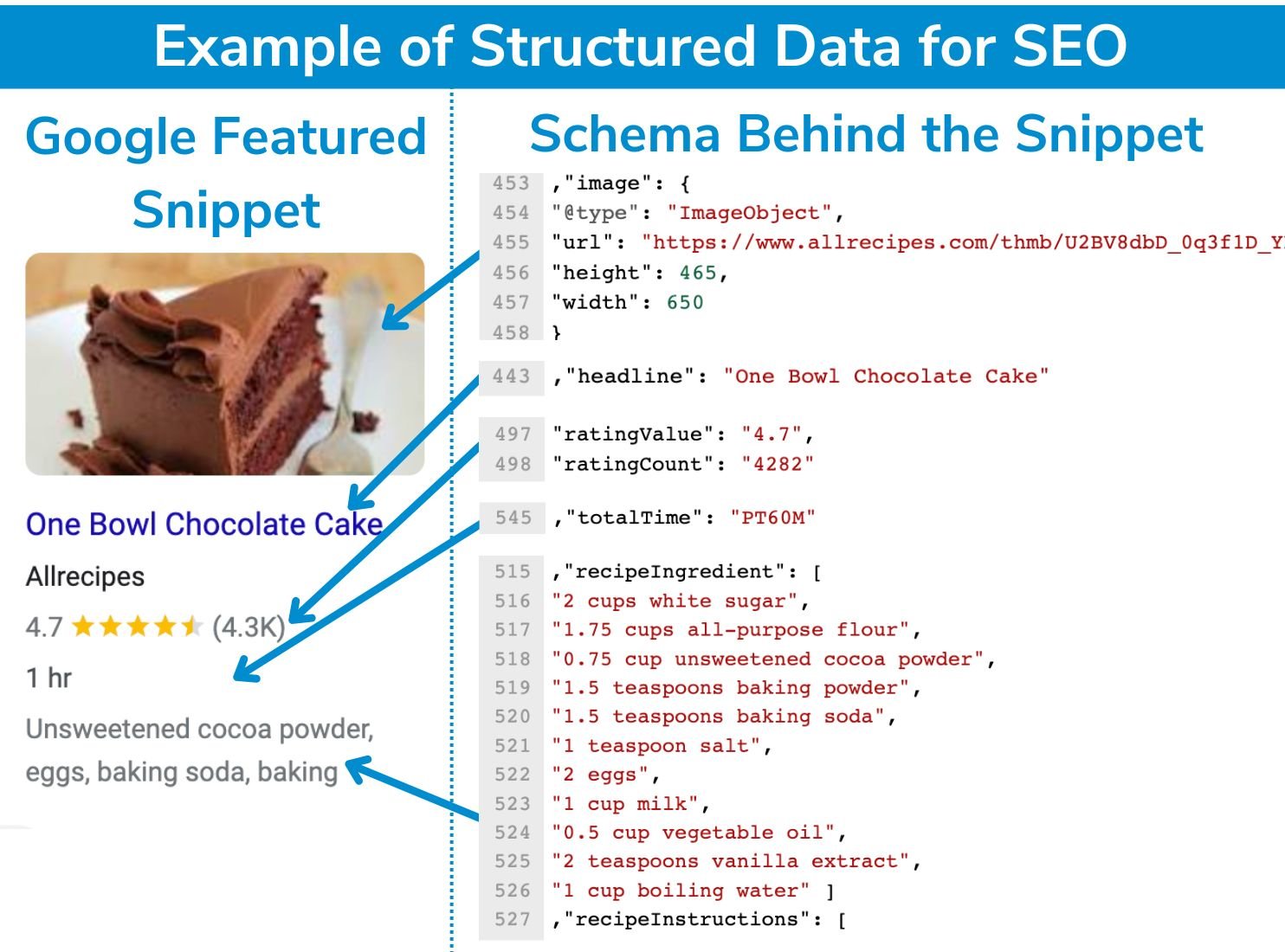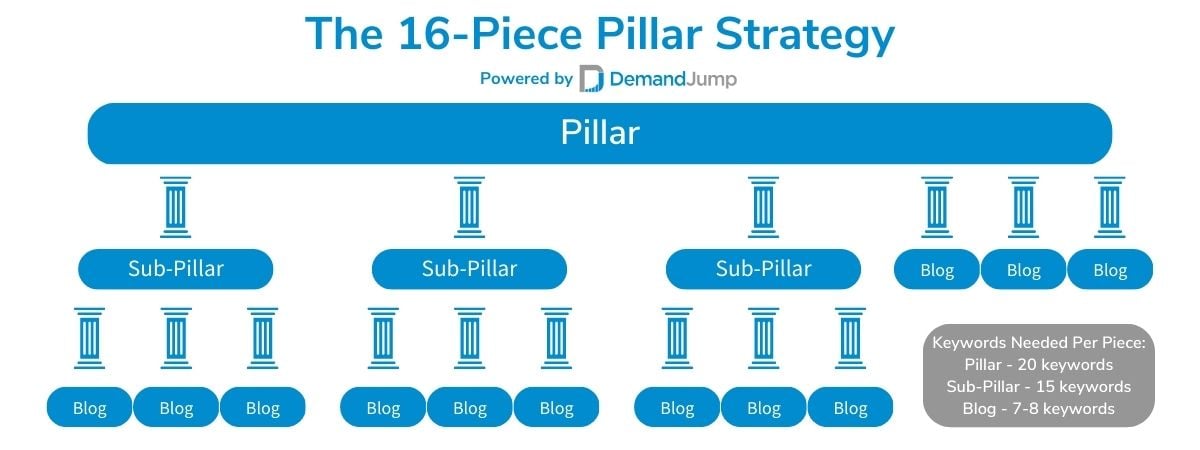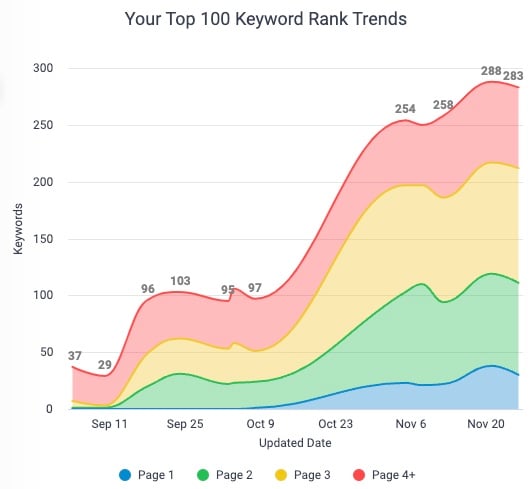Example SEO Strategies: A Guide to Simplifying SEO
December 19, 2023 •Allison Lemasters

So, you’re trying to do content optimization and get that huge library of content you’re sitting on to actually rank. You’ve got that SEO checklist the previous marketing director found somewhere, and you’re trying to make heads or tails of what to do. But how can you make sure your content actually ranks? How do you know if that checklist is actually going to help?
Don’t panic, as the good book says.
We’ve put together this short guide with an SEO definition and examples to help you optimize your content and create new content that actually ranks. Grab your towel, let’s get started.
What Is SEO and How Does It Work?
SEO, also known as Search Engine Optimization, is the process of using different strategies to get your content or website pages on the first page of search engine results. While companies often rely heavily on paid advertising to boost their web presence, the reality is that focusing organic traffic is a viable, effective strategy. Think about it: do you click paid ads? When you do, do you trust the company?
As ABBA once so wisely said, “Money, money, money. Must be funny in a rich man’s world.” Take ABBA’s advice: stop thinking like a funny rich man! There’s a better way to do SEO. You can increase your online presence, inspire trust, and actually reach the people you need to reach with Pillar-Based Marketing (PBM)—but more on that in a moment! When you’re optimizing content, keep in mind the goal: organic content is cost-effective and seen as more trustworthy than paid ads.
How Does SEO Work? What Are Our Google Overlords Looking For?
It’s hard to know exactly what search engines prioritize, but we do have two good clues to go off of: Google’s E-E-A-T principle and the helpful content update. Let’s take a quick look at both of these.
1. The E-E-A-T Principle
E-E-A-T, also known as “double-EAT” (and “the artist formerly known as E-A-T”), stands for experience, expertise, authoritativeness, and trustworthiness. This is the guiding concept underlying Google's various broad core algorithm updates. The E-E-A-T principle is used to instruct Google's search Quality Raters as they attempt to determine if search results are effective and high-quality. Quality Raters are employed by Google to ensure that all search results meet users' needs and align with best practices outlined in Google’s Search Quality Rater Guidelines.
The results submitted by Quality Raters train Google’s algorithms to identify signals that correlate with the E-E-A-T principle. If your on-page SEO follows E-E-A-T guidelines, your website is more likely to rank higher in search engine results. So, how can you make sure your on-page SEO properly aligns with E-E-A-T? Here are a few things to keep in mind:
- Demonstrate your first-hand experience with the subject matter—for example, Ryan Brock, DemandJump’s Chief Solution Officer, literally wrote the book about Pillar-Based Marketing!
- Showcase your expertise by producing quality content that displays your company’s thought leadership and authority across various topics in your industry.
- It’s not enough to chime in on the topics everyone is talking about; your website should establish your authority in several niche areas of your industry that relate directly to your business offerings.
- Publish high quality content that provides a great experience for readers to establish your site’s trustworthiness.
2. Google’s Helpful Content Update
According to Google, “the helpful content update aims to better reward content where visitors feel they've had a satisfying experience, while content that doesn't meet a visitor's expectations won't perform as well.” This means that producing consistent, truthful, and enriching content on your website will win you brownie points with Google’s algorithm. Here are some best practices to follow:
- Lock down your website’s primary purpose and ensure your content always relates back to that purpose.
- Hone in on a specific intended audience or ideal customer profile (ICP) and make content with that audience in mind.
- Ensure your content clearly and concisely demonstrates first-hand expertise and extensive knowledge.
- Write content that makes the reader feel like they learned enough to achieve their goal.
- Keep an eye on Google’s broad core algorithm updates to monitor any changes.
What Should Be Included in SEO?
A strong SEO strategy should include four general techniques: on-page, off-page, technical, and local—to improve a website and move it up the search engine results pages.
- On-Page: Helpful website content and thoughtful keyword usage are the main cornerstones of on-page SEO. Other prominent players in the on-page SEO game include image optimization, URL formats, internal linking, title tags, and meta descriptions.
- Off-Page: Social media marketing, backlinks, guest blogging, podcasting—anything you do off your website to improve your website’s organic traffic is considered off-page SEO.
- Technical: Technical SEO gets into the nitty gritty of your website’s back end. Adding structured data to your site, increasing page loading speeds, and improving mobile-friendliness are all prime examples of technical SEO.
- Local: Businesses that rely on local demand and foot traffic need to consider local SEO. If that’s you, make sure you have a Google Business Profile and keep your contact information consistent across the internet. You can also gear your content toward local news, trends, and keywords.
What Is an Example of SEO Strategy?
A strong SEO marketing strategy example uses all four types of SEO techniques—on-page, off-page, technical, and local. Let’s explore how to do SEO with examples of businesses using SEO strategies out in the wild.
Examples of Companies Using SEO Strategies
Below are two prime examples of how top companies are using SEO strategies to boost their presence on search engine rankings. Even though all businesses have their own unique goals, there are still valuable and applicable lessons to be learned from these examples.
1. Allrecipes’s Structured Data Earns Enticing Google Preview Boxes
You want to make it easy for search engines to understand your website. This practice is made possible by structured data, as it defines everything on your site using a standardized organization method. Many website creation platforms will structure your data automatically, but it’s always good to check. You can use the Schema Markup Validator to see how your website data is structured.
What is a good SEO strategy using structured data? Allrecipes, one of the top recipe resource websites on the internet, is an excellent example. In the diagram below, you can see on the left the Allrecipes featured snippet Google shows as a top hit for “one bowl chocolate cake.” Google includes the highlights of what bakers want to know before starting a recipe, like a drool-worthy chocolate cake photo, the total time it will take, and a general idea of the ingredients.

Data from Allrecipes and Schema.org, 2023.
On the right are screenshots pulled from Schema Markup Validator demonstrating the schema Allrecipes used to mark this information for search engine web crawlers to understand. By doing so, search engines can display this information in an enticing way, pulling clicks from folks who are sick of doing dishes but still want chocolate cake.
2. Planhat Uses SEO Techniques and Tools to Increase First-Page Rankings with Helpful Content
Planhat, a Software-as-a-Service company with a customer platform, designed an SEO strategy that aligns well with this Google update. Through helpful content creation, Planhat increased its total keyword search engine rankings from 37 to 283 in only a couple months. Two things were vital to this growth—the content marketing strategy of Pillar-Based Marketing (see? We told you we’d come back to it!), and DemandJump, a PBM SEO keyword research tool.
PBM involves writing a content network around a particular topic that a business would like to rank highly for on search engines. All the pieces are written around related short- and long-tail keywords to increase a brand’s authority on a topic. The types of content include 750-word supporting blogs, 2,000-word sub-pillars, and 3,000-word pillars, with the blogs linking up to the sub-pillars and pillar, and the sub-pillars linking up to the pillar.
Did we lose you? We know it sounds confusing at first, but we promise it’s quite straightforward—check out this diagram below for a better understanding.

For Planhat’s strategy, the chosen pillar topic was “Net Revenue Retention,” as this is one of the business metrics their platform monitors. They used DemandJump to build a pillar plan based on keywords they felt spoke to their audience. A few examples of SEO keywords they used as titles for pieces in this PBM plan include:
- “Net Revenue Retention” as the pillar title.
- “Gross Revenue Retention vs Net Revenue Retention” as a sub-pillar title.
- “What Is the Difference Between Gross and Net Retention?” as a blog title.
While all of these keywords may sound similar in subject, that’s also kind of the point. Not everyone searches the web for information the same way—one person may search “gross revenue retention vs net revenue retention,” and another may search “what is the difference between gross and net retention?” With a PBM strategy in play, Planhat offers valuable information for either way someone searches, covering the entire network of searches conducted for their topic.
After publishing their pillar of content on their website all at once (a PBM best practice), Planhat saw a healthy increase in their keyword rankings. Before posting this new content, they had about 37 keywords ranking on their website. After posting, their total rankings went up to 283 in about two months, which you can see in this graph pulled from the DemandJump platform.

Why Does PBM Work?
Simple: there are no tricks! PBM aligns with the E-E-A-T principles, helpful content update, and best of all: what people are actually looking for. Every day, normal humans turn to the internet with pressing questions like “who would win in a fight between a taco or a grilled cheese?” or “what are the best running shoes I can buy?” With the help of PBM, you’ll be there to give a helpful, educational answer from your brand’s perspective. (And yes, DemandJump's very firm stance is a grilled cheese wins a physical fight, but a taco wins a taste test battle.)
How Do I Write an SEO Plan with DemandJump?
Time to get optimizing! If you’d like to implement PBM as your next SEO strategy and see these results for yourself, try DemandJump. We understand that helpful content is only one part of a well-rounded SEO strategy—but according to the algorithm overlords at Google, it’s an important piece of the puzzle.
To get started, try our platform for free by clicking the button below. No pressure. We know our platform and our approach gets incredible SEO results time and time again for our customers, and it can do the same for you.
Featured Articles
Categories
- Attribution Tracking (13)
- Channel Optimization (11)
- Consumer Insights (68)
- Content Marketing (251)
- Data Science (8)
- Digital Marketing (6)
- Digital Transformation (26)
- Enterprise (10)
- Lead Generation (14)
- Market Intelligence (8)
- Marketing Analytics (39)
- Marketing Attribution (57)
- Marketing Management (153)
- Marketing Operations (86)
- Organic Search (222)
- Paid Search (52)
- Pillar-Based Marketing (63)
- Programmatic Advertising (9)
- SaaS Content (14)
- SaaS Marketing (29)
- Search Marketing (111)
- SEO Keyword Research (28)
- SEO Pillar (18)
- SEO Strategy (46)
- SMB (5)
- Website Content (12)


